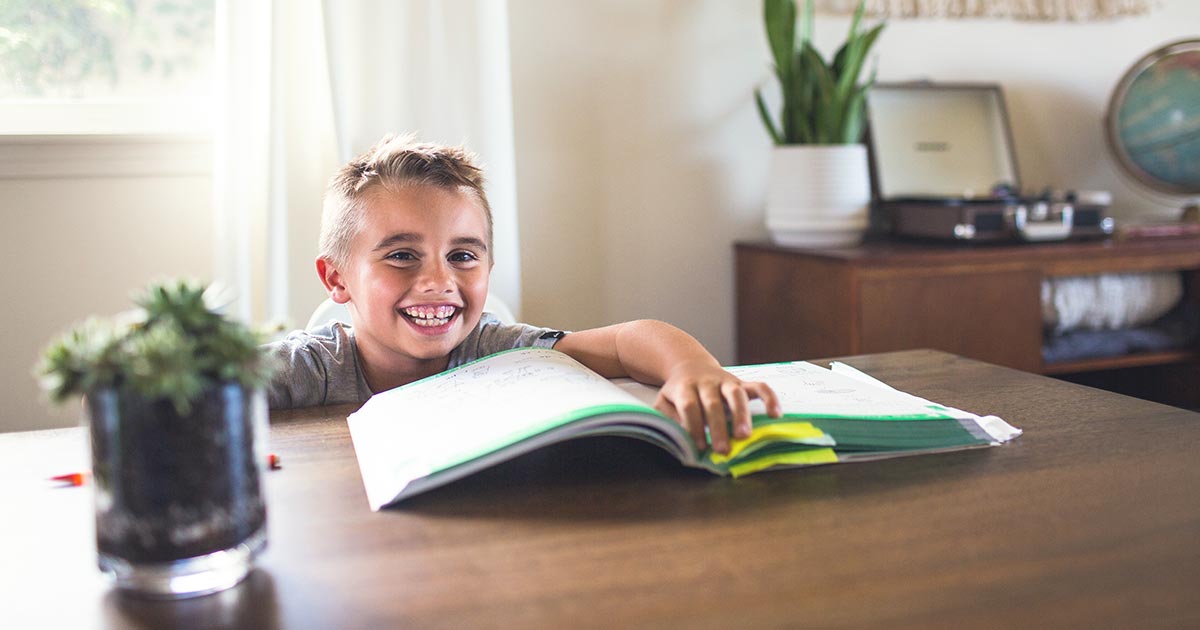As any parent with kids in school knows, you spend more time chasing down paper work, backpacks, lunchboxes, sports equipment and musical instruments than you ever thought possible. At the end of the day, your home can become so jumbled up with your kids’ belongings that you begin to wonder if a tornado tore through the middle of it.
Professional home organizer Sheri Bertolini says organizing a few key spots in your home can help you win the daily battle with clutter—and then your kids can actually keep up with their important papers and school supplies themselves. Here are her tips to help get your home organized for the back-to-school season.
Get in the Zone
Sheri suggests the best place to start organizing is your after-school routine. What’s the first thing your kids do as they walk through the door? Do they dump their backpacks on the floor, toss their lunchboxes aside and head for the couch? Are they dashing through the house to get ready for practice or music lessons?
Get expert money advice to reach your money goals faster!
Whatever your current routine is, you can streamline it by designating some space in your home for these three zones:
1. The Homework Zone
“Homework zones vary because they need to be based on your kids’ learning style,” Sheri says. The kitchen table works well for kids who thrive on hustle and bustle, while others need a desk in their room or dedicated space where distractions are kept to a minimum.
The best homework zones don’t have to be torn down and reassembled each day. “That can be tough in a smaller home, but I encourage parents to carve out a corner in the kid’s room or family room with a table space and somewhere for all the child’s supplies to live,” Sheri advises.
Kids also need some say-so in their homework zone setup. “Ask the child what they think will work for them. What kind of lighting? Do they like music playing while they work?” Sheri says. “The more input the kids have, the more likely they will be to use the space as you intended.”
2. The Drop Zone
This is the designated parking place for all their stuff—backpacks, jackets, sports equipment and so on. The best location for a drop zone is either in the kid’s room or near the door everyone uses when they head to school in the morning.
Make use of vertical space so your drop zone doesn’t take up too much room. “Use hooks and hang bins on the wall,” Sheri recommends. And don’t forget a hamper to keep all their not-so-fresh smelling sports clothes off the floor.
“No one wants to deal with an organizational eyesore in their home, even for the sake of efficiency. But with a little creativity, your system can fit right in with your home’s décor,” Sheri says.
“One family hung a large, personalized picture frame on the wall for each kid. Inside the frames, attached to the wall, were hooks for their backpacks and jackets, organizers and clips for papers, and a corkboard for other reminders,” she says. “The kids participated in the design, so it wasn’t just the parents laying down the law about where to put their stuff.”
3. Mom and Dad’s Zone
This is simply a container of some kind for all the paper work that needs your attention each day. “I recommend you set up a file folder for each child,” Sheri says. “Put them in a vertical file holder, color code—whatever you have to do to quickly identify which papers belong to which child.”
Put Your Zones to Work
With your zones established, everyone can work together to make sure all important items end up in their proper places instead of leaving it all up to Mom and Dad to keep them in order. The key is establishing a routine everyone follows as soon as they come home.
“One of the best routines I’ve seen started with a kitchen table or island that had been cleared so that as soon as the kids walked in the door, they flopped their backpacks on the table, took their lunch things to the kitchen and then dug out papers for mom and dad to tend to,” Sheri says. “Mom or Dad sorted the papers into their file folders and everything was processed right there, right away.”
Afterward, the kids can head to their homework zones, have a snack or take care of chores—whatever’s next on the schedule. When homework is done, they pack up and stow their backpacks in the drop zone so everything’s ready for the next morning.
It can take a while to get everyone on board with the routine, but don’t give up. “When the pattern is repeated consistently each day, the children develop self-discipline,” Sheri says.
Remember Your Goal
In the end, these zones and routines are about the kids—not about being organized. Your goal is to focus less on keeping order at home and more on enjoying your time at home as a family.
“Pay attention to the kids,” Sheri says. “Pay attention to what’s working for them and what’s frustrating them, and that will be a good barometer of whether or not your system needs adjusting.”
Back-to-school season is a great time to make planning a priority in every area of your life! Why not get organized with your finances as well? Start your free EveryDollar budget and take control of your finances today!



